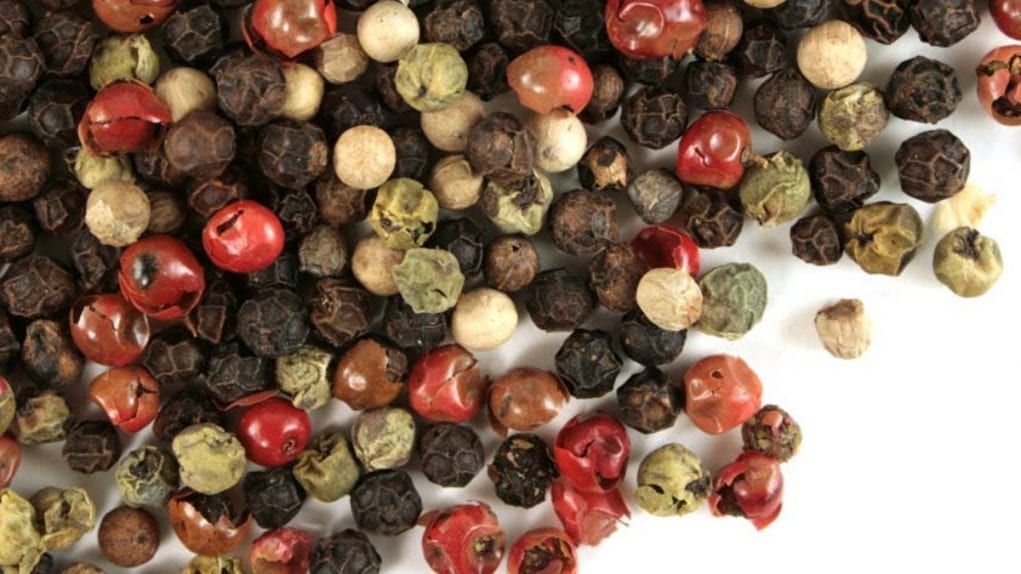Caryophyllene is the only terpene to bind to the same receptors as THC
The shaker of black pepper you have on the table at a restaurant is an excellent example of caryophyllene’s signature essence. Caryophyllene is a constituent of many plants familiar from your spice rack, including:
- Pepper – the little black peppercorns you grind into pepper
- Cloves
- Hops
- Rosemary
- Basil
- Oregano
- Black caraway
Caryophyllene is a very unique specimen among terpenes, from its molecular structure to how it acts.
Flavor and aroma:
A pungent, peppery smell and taste. Not spicy in the sense of tasting hot (that’s capsaicin you’re thinking of), but the bitter-sweet, musky aroma and flavor which even mild bell peppers have. Some might be able to separate the flavor better in cloves, which have similar flavors while accomplishing their hot sensation using a different active ingredient (eugenol).
What it does:
In brief, caryophyllene works as a separate, stand-alone drug. It is prescribed stand-alone in topical ointments and cremes, as an analgesic (which means it relieves pain). Caryophyllene has been clinically proven in extensive studies to alleviate or treat all of the following conditions:
- atherosclerosis
- osteoporosis
- colitis
- osteoarthritis
- diabetes
- cerebral ischemia
- liver fibrosis
- anxiety and depression
- Alzheimer-like disease types
In addition, cancer studies have shown caryophyllene to be synergistic with Paclitaxel, a chemotherapy drug, and even helps suppress tumor growth on its own.
Studies have shown that caryophyllene suppresses alcohol cravings and even retards some of the addictive and behavioral effects of alcohol consumption. So it’s been suggested as an alcoholism treatment as well.
So that’s an amazing amount of work for a terpene to do! Caryophyllene is one of the primary reasons “medical cannabis” is a thing.
Where to find it:
Caryophyllene is abundant in the following strains:
- Lavender
- Candyland
- Blueberry Cheesecake
- Death Star
- Original Glue
- Cookies and Cream
- Purple Punch
- Super Silver Haze
- Skywalker
- Rock Star
In short, most strains with a musky, cabbage or pepper aspect tend to be high in caryophyllene.
Fun facts:
We won’t get too deep into the neuroscience, but you should know that THC turns on the happy juice by binding itself to these ports in your brain called “cannabinoid receptors,” which is how many psychoactive substances work. Well, caryophyllene also binds to cannabinoid receptors, so it has its own psychoactive effects. Albeit, caryophyllene does not contribute to the high itself, but does play heavily into analgesic, sedative, and anti-inflammatory aspects of the entourage effect.
Even farther-reaching research has suggested that caryophyllene may help increase longevity itself by reducing long-term cell stress.
Chemistry nerd trivia: caryophyllene is unique in exhibiting a “cyclobutane ring,” aka a “carbon square,” in its molecular structure, being one of the very few organic sources of this phenomenon. It’s not significant in its medical usage, but just one more weird thing about caryophyllene.













